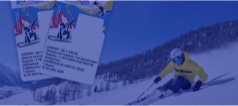INNSBRUCK 1976
The amazing evolution of the olympic torches design
This torch is made of silver and weighs 900gr. Almost at the apex of the torch are the 5 imposing and beautiful rings. On the side, a blade reaches the handle of the torch. This blade represents the famous Mount Isel where all the ski-jumping competitions were held. The Emblem stands for the Inn bridge which gave its name to the city. The bridge and the five circles symbolize the fraternity amongst people of the world and the friendship amongst the young athletes of different nationalities who met in 1976 on the Inn bridge. The Games of 1976 had been assigned to Denver (USA), but a local referendum rejected the use of public funds to support the Games. Innsbruck, the city which organized the Winter Olympic Games 12 years earlier, offered to step in and host the manifestation even if the time was short. The most memorable image of the Games was local hero Franz Klammer flying wildly down the downhill course, barely in control, on his way to a gold medal. Rosi Mittermaier of West Germany won two of the three Alpine skiing events almost becoming the first woman to win all three: but in the final race, Canada’s Kathy Kreiner beat her by 12 hundredths of a second. Ice dancing debuted as a full medal discipline and was dominated by the Russians. In figure skating, American Terry Kubicka performed a back flip - the first time in the history of figure skating when this dangerous move had been successfully performed.





